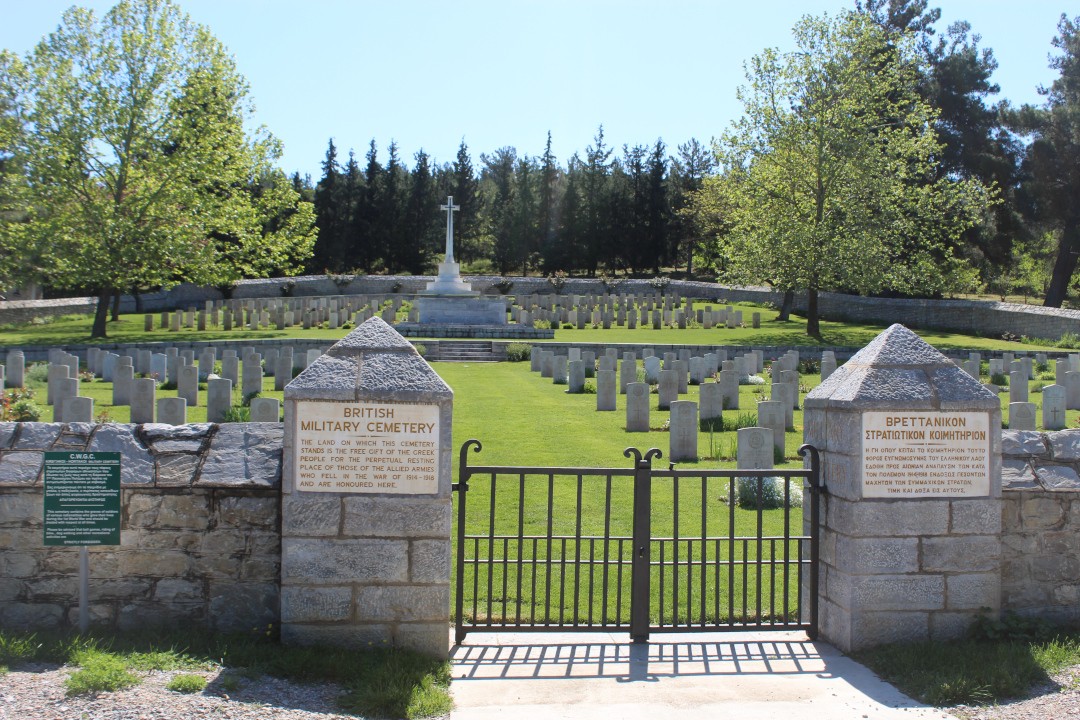The German forces invaded Thessaloniki in April 1941. The first German soldiers were buried in the Zeitenlik cemetery, the biggest necropolis of WWI. In 1942, the German army requisitioned a plot of land in the area of Pilea and forced Serbian, Russian and Polish prisoners of war to build a military cemetery, according to the architecture of Northern Europe.
During the occupation, about 1,300 German officers and soldiers were buried there, they had mostly died of diseases or accidents. After 1943, there were also burials of soldiers who had fallen in battle.
Two years after the war, the remains of the dead were gradually transferred to the catholic cemetery of Thessaloniki and by 1953, to the Dionysos German Military Cemetery in Athens.
The military cemetery of Pilea remained as a military cenotaph. In the late 1970s, the German crosses were removed and, in their place, white marble crosses without names were positioned. The bones of 185 Greek soldiers were transferred to the chapel's ossuary.
Today, the Military Cemetery of Pilea belongs to the Greek Army and opens its gates only once a year, every February.
